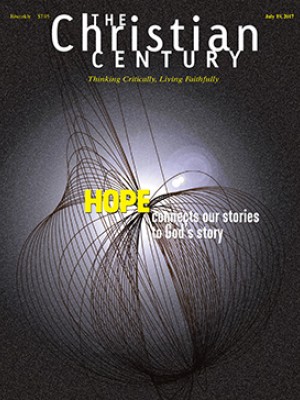What people need from their pastors
The ailing young man wanted to be face to face with God. I opened my shoebox.

Clergy are very busy. If they weren’t, they and everyone else would see the embarrassment, the king-with-no-clothes exposure of representing the mysteries of God. If members of the clergy go through the whole week without a single recognition that this could all be a load of nonsense, it probably means they’ve insulated themselves against the Holy Spirit. Pelagius has won.
Clergy are saved, on the whole, by the laity—laity who know what clergy are for and ask them for it. And so it was that I found myself sitting at a table across from a person who has no fewer than 17 physical ailments. We once shared a train journey and I was talked through all 17. Recently the person had a major setback. One thing led to another—several of the conditions set off others like a trip wire, leading to numerous planned and unplanned stays in hospital.
Read our latest issue or browse back issues.
Of course, we could have talked about the latest setback. We could have prayed, and I could have shown my mastery of medical science as I identified the right intercession to attach to each condition. We could have had a drink and told stories.
But this person didn’t want any of this. This person wanted to be brought face-to-face with God. I wasn’t required to fix, sympathize, support, or advise. I wasn’t, in that sense, wanted at all. What this person wanted was God. My role was to help with that. So we sat at the table, and I started taking small items out of a shoebox. I was taught to do this by Jerome Berryman, the founder of Godly Play. I’d done the activity with children, children and adults, and with groups of up to 170 adults. But I’d never before done it with just one person. Yet I knew somehow that this person wanted the box.
Out of the box came Israelites—people of Judah, to be precise. They occupied a corner of the desert, a mass of sand that covered most of the table. They had city walls, a temple, and a king. They were sitting pretty. But then it all fell apart. The Chaldeans came. The walls fell, the king was deposed, and the temple ransacked. The people began the long journey to Babylon. My visitor and I listened to the crunch of the feet on sand as each figure made its way across the desert. In Babylon they were sad, lost, and confused. But strangely they found God was there too. In the city’s welfare they found their welfare. Later, many made their way back to Jerusalem. Crunch, crunch. They built a new temple. But their new life there was different.
My visitor and I sat in silence. We wondered about the lost happy days and about the exile these multiple conditions had induced. And we thought about the truths found in Babylon. There was loss—but also new companions, a new sense of God, a compassion for others. “I so desperately want to return to Jerusalem!” my companion said. But it wasn’t that simple. The 17 conditions were terrifying and overwhelming at times. But there was no fantasy existence in which they would just go away.
Three months later we came back to the table. There had been advances and setbacks. Perhaps my visitor had arrived at a “new normal.” At his young age, he was at the boundary between condition and disability, between temporary difficulty and life sentence. Same box—different story. Out came a large green underlay followed by wooden strips that looked remarkably like the walls of Jerusalem—but now they built a sheepfold. There were sheep and a shepherd. There was good pasture. There were still waters. There were places of danger where one could get lost, frightened, confused, or even dead. The shepherd guided the sheep to the good pasture. What was that good pasture? Good work, good housing, a secure income? Then he went beside still waters. Was that friends, church, relatives, or hobbies?
The shepherd didn’t seem to avoid the dangerous places, but he didn’t abandon the sheep there. What were those places? Did they have a name, or were they the 17 life-threatening conditions? And what was the sheepfold? A tempting place to linger—but evidently not lush like the meadow or refreshing like the water.
Most of the time we spent together we were silent. This wasn’t about making decisions. It was about trying to make some sense of life or recognizing that life made no sense, but allowing one’s life to be grafted into a story longer, deeper, and truer than one’s own.
Ministry is about standing beside people as they face the truth about their lives, the world, and God. People who say they like facing the truth are lying. We’re so frightened of it that we concoct a hundred ways to avoid it. That’s busy. But to face the truth, to be embraced by the truth, to discover one’s place in that story—that’s faith. Ministry stares down the emptiness until the truth emerges. Sometimes it takes a while.
A version of this article appears in the July 19 print edition under the title “Godly play with adults.”







